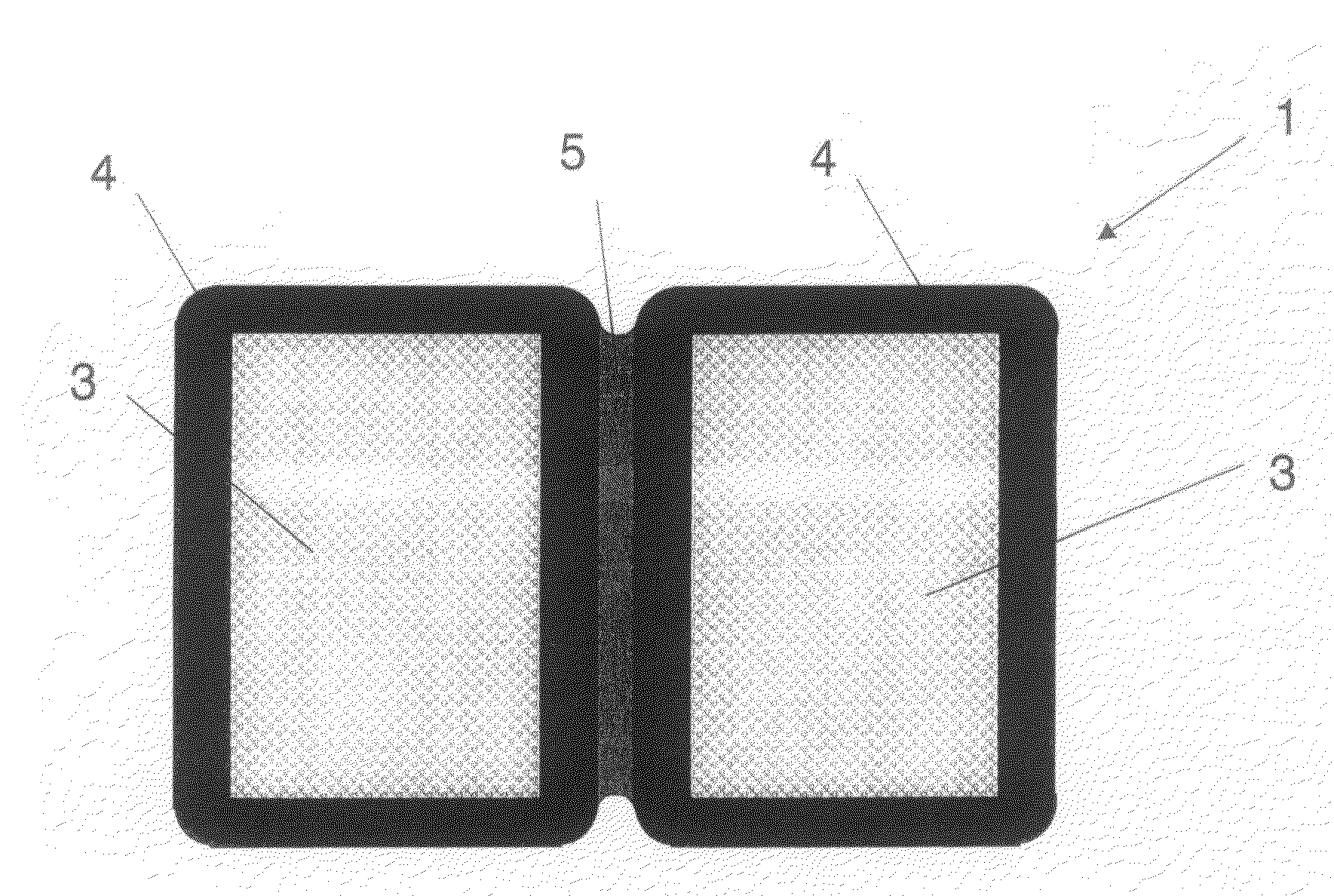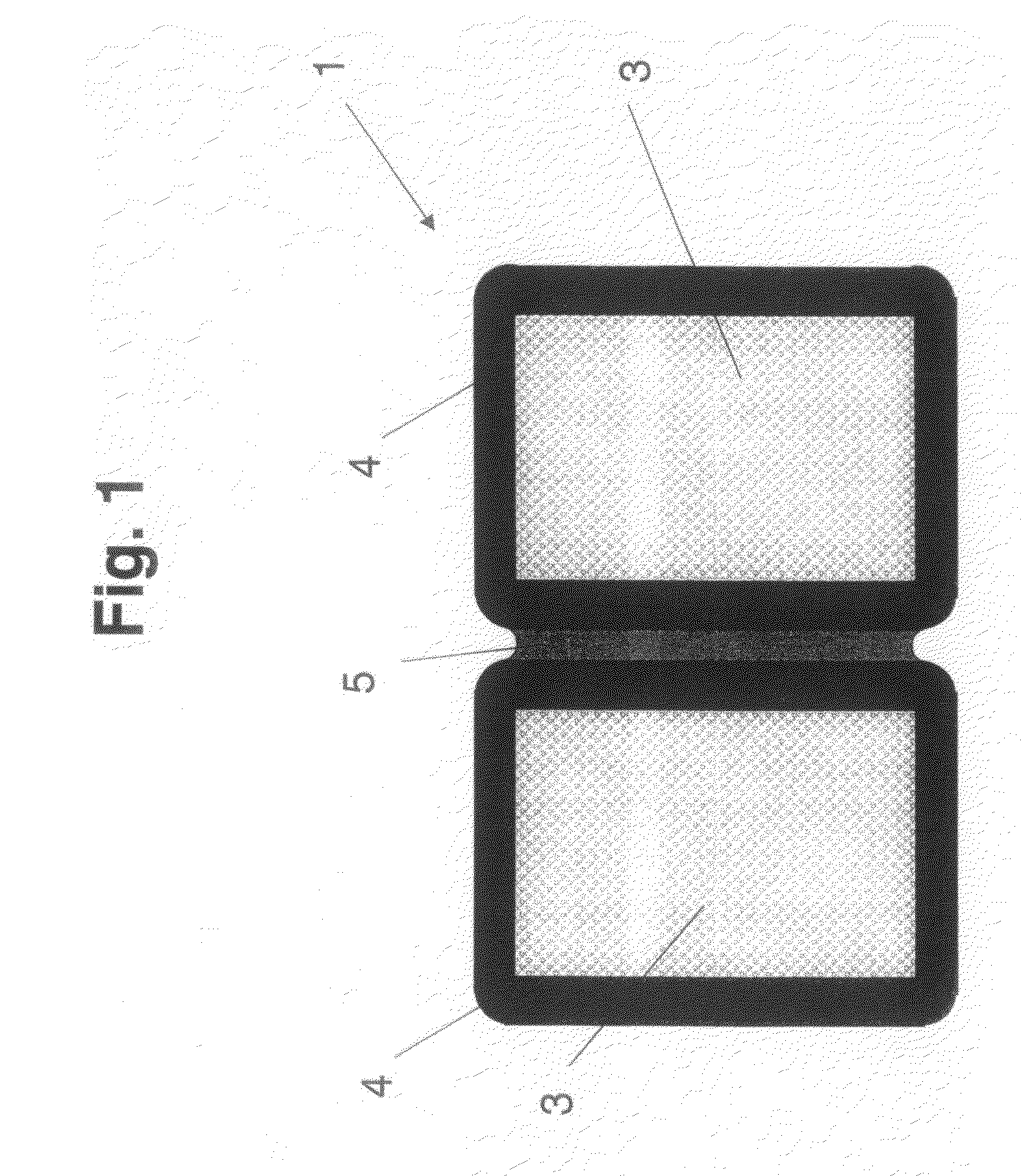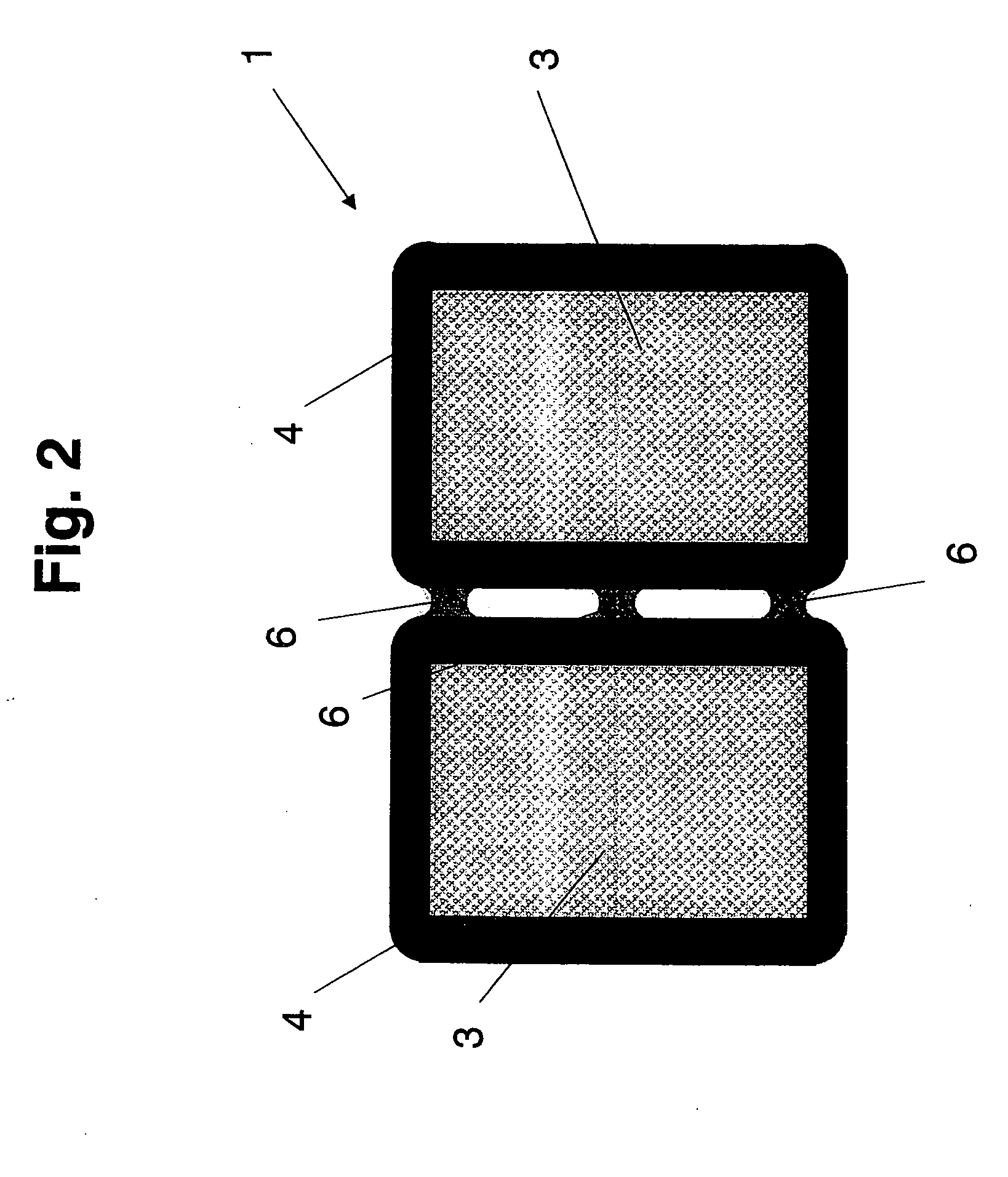Gas Diffusion Unit
a technology of gas diffusion and gas diffusion layer, which is applied in the field of gas diffusion unit, can solve the problems of difficult mutual alignment of gas diffusion layer, deformation of fuel cell, and deformation of efficiency, and achieve the effects of preventing leakage, improving sealing action, and large-scale production
- Summary
- Abstract
- Description
- Claims
- Application Information
AI Technical Summary
Benefits of technology
Problems solved by technology
Method used
Image
Examples
Embodiment Construction
[0031]FIG. 1 shows a gas diffusion unit 1 for a fuel cell 2 composed of two planar gas diffusion layers 3. Gas diffusion layers 3 are made of a carbonized nonwoven fabric, seals 4 being configured at the perimeters of gas diffusion layers 3. In this variant, seals 4 are made of a composition that includes silicon and were affixed to gas diffusion layers 3 by injection molding, the sealing material having penetrated into the pores of the nonwoven fabric. In other variants, the seal may also be made of thermoplastic elastomers, EPDM (ethylene propylene dien monomer), PIB (polyisobutylene), PU (polyurethane), BR (butadiene) or of a blend of these materials, including silicon. Seals 4 of both gas diffusion layers 3 are formed of uniform material and in one piece and, in this variant, are joined together by a connection strip 5. The two gas diffusion layers 3 are joined together by connection strip 5 in an articulated manner.
[0032]FIG. 2 shows a gas diffusion unit 1 according to FIG. 1, ...
PUM
| Property | Measurement | Unit |
|---|---|---|
| thick | aaaaa | aaaaa |
| thickness | aaaaa | aaaaa |
| elastic | aaaaa | aaaaa |
Abstract
Description
Claims
Application Information
 Login to View More
Login to View More - R&D
- Intellectual Property
- Life Sciences
- Materials
- Tech Scout
- Unparalleled Data Quality
- Higher Quality Content
- 60% Fewer Hallucinations
Browse by: Latest US Patents, China's latest patents, Technical Efficacy Thesaurus, Application Domain, Technology Topic, Popular Technical Reports.
© 2025 PatSnap. All rights reserved.Legal|Privacy policy|Modern Slavery Act Transparency Statement|Sitemap|About US| Contact US: help@patsnap.com



